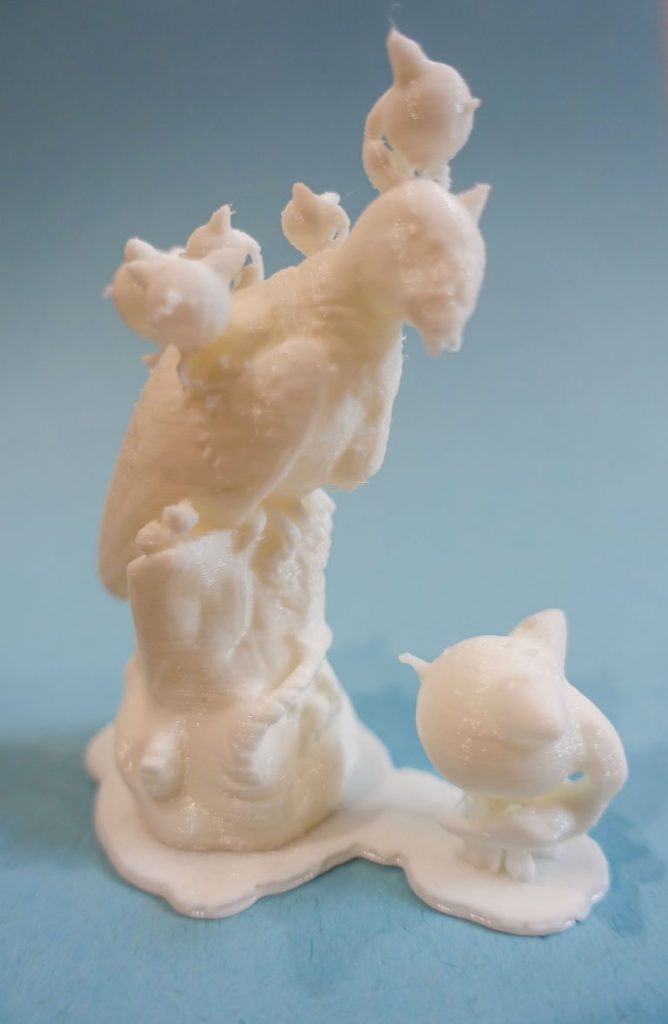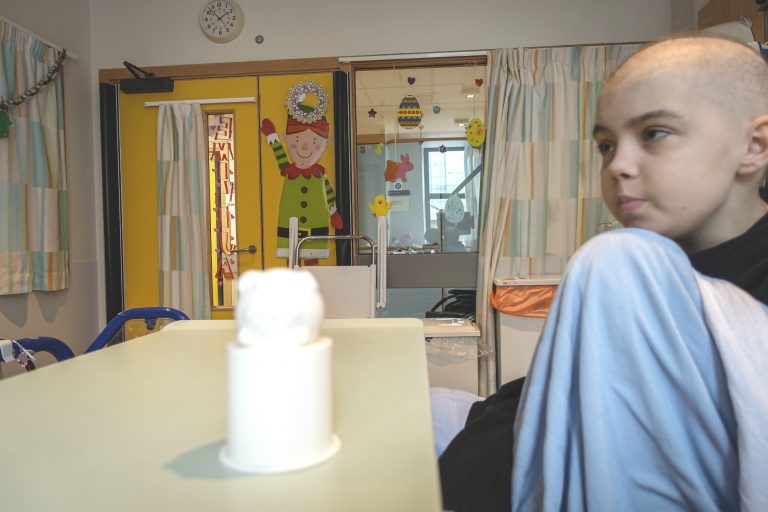GOSH Arts collaborated with the Victoria & Albert Museum (V&A) to deliver a 3D printing project with young people in Bone Marrow Transplant (BMT) wards at Great Ormond Street Hospital (GOSH), bringing the V&A’s incredible sculpture collection into the hospital.
The following is from the article by Caroline Moore on Engage
The process of BMT replaces damaged blood cells with healthy ones and can be used to treat conditions such as lymphoma, leukaemia and other rare childhood cancers. One of the risks associated with BMT is that pre-transplant patients receive such high doses of chemotherapy or radiotherapy that their immune system is seriously compromised, leaving them open to infection. As a result the children and young people undergoing treatment have to stay in high level isolation for up to 3 months, which can result in them missing out on key social and cultural experiences and lead to feelings of loneliness. GOSH are currently trialling a new experimental transplant treatment and subsequently there are more teenagers on the BMT wards than normal. This project was a perfect opportunity to engage these young people in the possibilities of contemporary digital design techniques and methods of making whilst also providing opportunities to explore the V&A’s collection.

“The 3D models we used from ‘Scan the World’ are an incredible resource for those working in museum education and artistic fields to play with objects as source material for new forms of creativity. The community who have gone out and created this archive of 3D scans, sometimes without any permission from the institutions they come from, have enabled not only fresh access to cultural heritage but have also started conversations and responses with museums as to how they share and record the collections they hold.” – Alex Flowers, Head of Digital Programmes at the V&A
The young people used 3D scans of ‘heroic’ sculptures in the museum’s collection as their starting point, combining them with their own designs to make unique artworks which creatively reinterpreted the museum’s collection. They were excited to use the technology as most of their schools now have access to 3D printers, but due to the fact that they have been outside main stream education for a long time none have had a chance to experiment with the technology before, a simple example of ways in which these young people are missing out on experiences their peers are having.

The Young People built narratives around their sculptures, giving them their own history, background and stories. Alex shared these with the other young people on the ward involved in the project and encouraged them to use each other’s 3D model designs, allowing them to get to know each other a little, despite not physically meeting. By facilitating these shared experiences the project supported the young people to feel part of a creative community, which, alongside interacting with Alex and the Museum’s collection may have helped them feel less socially isolated.

The project also captured the imagination of the staff on the ward who were intrigued by the concept of 3D printing and couldn’t wait to see what the young people made. They even discussed the potential for using the technology within clinical care for instance though having a 3D model of a thymus gland (a specialised primary lymphoid organ, which develops the immune system and teaches it how to recognise and attack the body’s invading germs) to use as a tool to help explain treatment to the young people and children on the ward! The young people and their families were excited by how accessible the software was and how quickly they could build their own 3D models.

The software that was used during the project is free to access on iPad, devices that many of the young people already have or are able to access though the Play Service at GOSH, and therefore are able to continue to experiment and improvise with 3D modelling using the skills and techniques that Alex shared with them.
“It was really fun and at the same time hard, I really enjoyed experimenting with the tools. Alex was a really fun guy and he taught me really well!” Participant
The Play team on the ward are now in the process of securing a 3D printer on long term loan to enable other young people to experiment with the software and access museum collections from across the world whilst they are at GOSH.

“The project simply and creatively brought elements of the V&A’s collection out of the museum to an audience who wouldn’t normally be able to access it. Cultural entitlement is something we champion within the hospital and focused projects like this are especially important for children and young people in isolation who have limited access to some of other services the hospital provide due to the risk of infection. We know that engaging with the arts can reduce reliance on medication, reduce perceptions of pain and speed the healing process though improving feelings of wellbeing, so it’s important that patients at GOSH are not restricted by their illness and still get opportunities to engage with the best possible cultural experiences regardless of what else is going on in their lives.” – Caroline Moore, Arts Manager GOSH Arts
During the project we used the following software, all of which are free to access:
Sculptris
3D Builder
Scan the World
About GOSH Arts
GOSH Arts is the arts programme at GOSH. Our participatory programme, art commissions and temporary exhibitions inspire creativity, create welcoming environments, and offer meaningful cultural opportunities across a variety of art forms for patients, families and staff.
Our work plays an essential role in enhancing the hospital experience. Engaging with visiting artists and having art integrated into our buildings helps to create more relaxed spaces, less clinical environments and contributes to reducing stress and anxiety for our visitors and staff.
About the V&A
The V&A is the world’s leading museum of art and design, housing a permanent collection of over 2.3 million objects that span over 5,000 years of human creativity. The Museum holds many of the UK’s national collections and houses some of the greatest resources for the study of architecture, furniture, fashion, textiles, photography, sculpture, painting, jewellery, glass, ceramics, book arts, Asian art and design, theatre and performance. The young people were able to engage with the collection using 3D scans, modelling software, and by producing their own 3D model.
